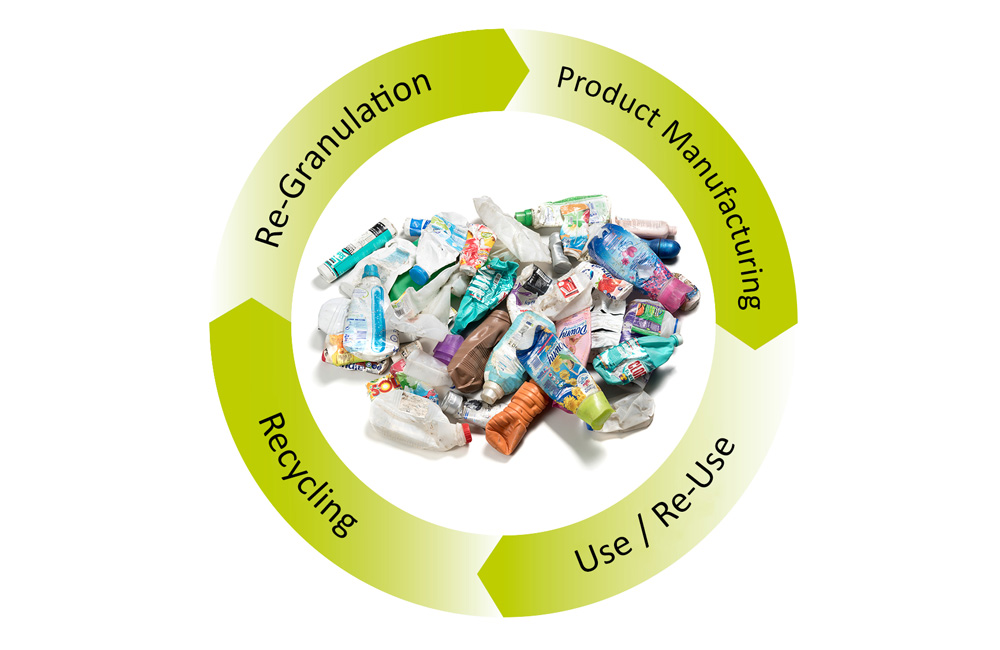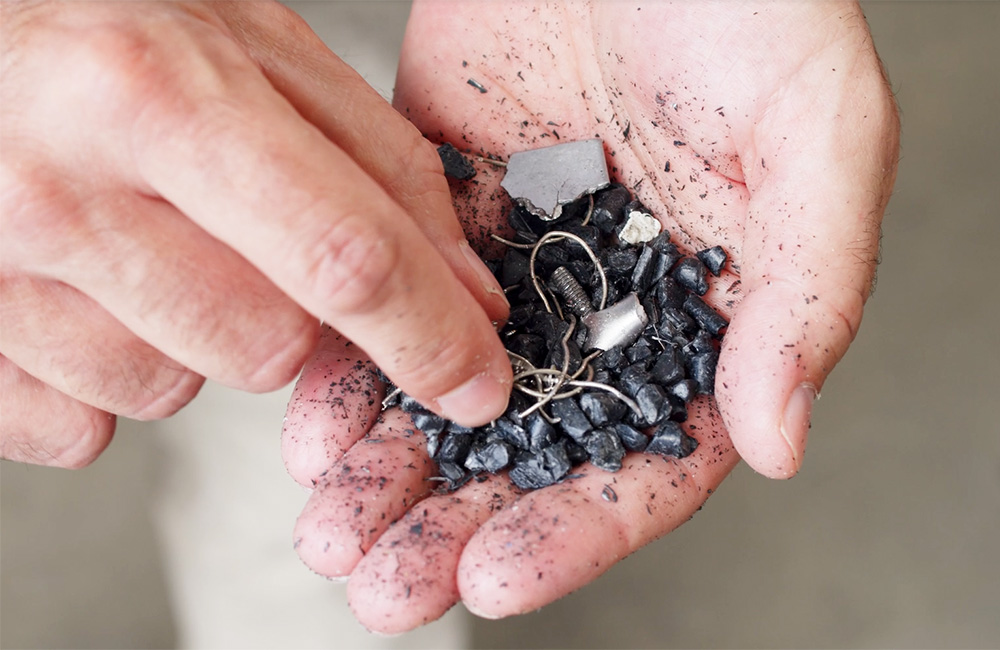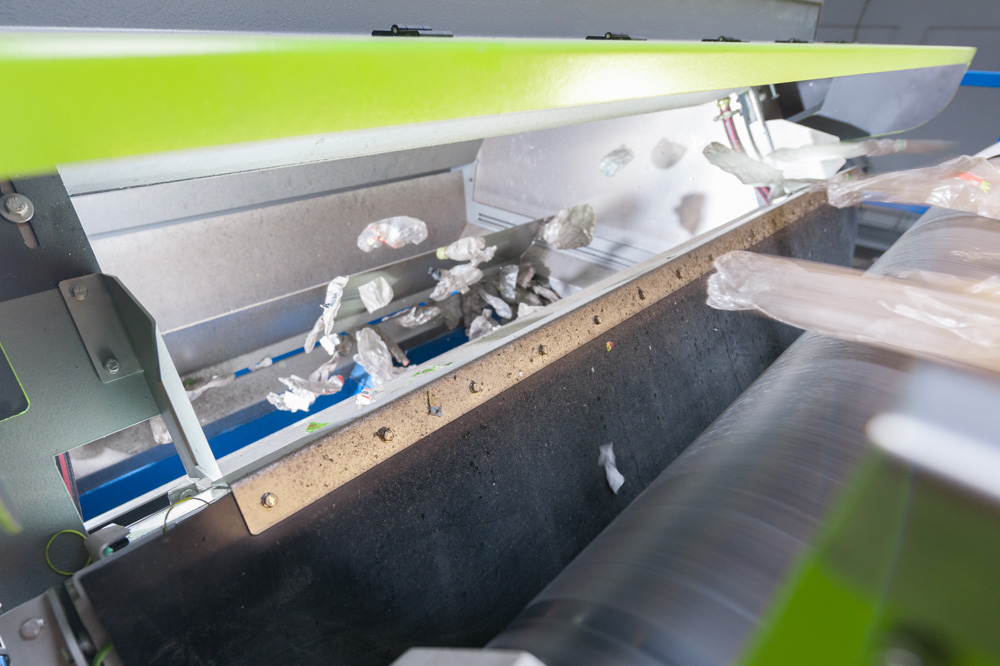Circular Economy for plastics – An Overview
Our collection of articles on the circular economy covers many aspects of the plastics cycle, including the specific challenge of foreign object detection and material sorting.
Content overview:
General information on Circular Economy for plastics
- Plastic: part of the problem…part of the solution - Part 1: a global problem
- Plastic: part of the problem…part of the solution - Part 2: the European Union’s solution
- Plastic: part of the problem… part of the solution - Part 3: Sorting technology
- Plastic: part of the problem...part of the solution - Part 4: Efficient use of recyclates
- Circular economy – how it will change our lives
- Circular economy – it needs to be profitable
- Don’t forget the circular economy
- Infographic: Circular Economy - Plastics Industry in Transition
-
Plastics Circular Economy 2023 - an Update
Circular Economy for plastics manufacturers
and processors
- How plastics processors use recyclates profitably
- The plastics cycle and contaminated recyclate
- White Paper: Using recycled materials in plastics processing
- Design for recycling - an important component of the Circular Economy
- Granulate recovery and its importance for the plastics industry
- Using recycled material in the production of preforms, blow-moulded parts and plastic bottles - how it works!
- Safe use of recyclates in the production of packaging and films
Circular Economy for plastics recyclers
- Profitable recycling – how recyclers can work efficiently
- Current factors influencing the recycling circuit
- Recycling rate, recyclate content and the impact on the plastics industry
- Recycling more packaging –potential for PE and PP
- Food grade recyclate as a challenge of the circular economy
- Promoting plastic recycling - potential for PS and ABS
- Tray recycling - another step towards a closed PET cycle
- The recycling of hollow glass
-
The recycling of e-waste and its role in the
circular economy

General information on Circular Economy for plastics
Plastic: part of the problem…part of the solution - Part 1: a global problem
Some 70 years after the first plastic products came onto the market, the vision of a world without plastic waste still seems a long way off. Yet this substance - a plague once it becomes waste - is an extremely attractive material. What we need is a different approach to plastic waste. In this multi-part series, we look at the role that the waste management and recycling industry can play in this process. Part 1 takes us to a variety of destinations, including China.
→ Find out more about the global problem of plastic waste
Plastic: part of the problem…part of the solution - Part 2: the European Union’s solution
Some 70 years after the first plastic products hit the market, a world without plastic waste still appears far off. We need a different approach to dealing with what many consider to be rubbish – and we need it fast. In this multi-part series, we will take a look at the role that the waste management and recycling industry can play in the process. Part I took us to China. Now it is time to take a look at Europe.
→ Find out more about EU solutions
Plastic: part of the problem… part of the solution - Part 3: Sorting technology
Around 70 years after the first plastic product hit the market, a world without plastic waste now seems like a distant vision. It’s time for a new perspective on this supposed waste. In the third instalment of our series, we focus on how we must all manage how we deal with plastics in future, and the role materials sorting technologies and contaminant detection systems play in recycling.
→ Read about the role of sorting technologies in a functioning circular economy
Plastic: part of the problem...part of the solution - Part 4: Efficient use of recyclates
The problem of plastic waste seems insurmountable. But there is good news: plastic recycling is on the rise. And that is good for the circular economy. In parts 1, 2 and 3, we delved into the role of the waste management and recycling industry and how material sorting technologies can help. Part 4 is all about the increased use of recyclates as an essential part of properly closing the plastic cycle.
→ Read more about using recyclate to close the plastic loop here
Circular economy – how it will change our lives
What goes in can’t come out again. Rubbish heaps are a thing of the past and old materials are made into new products – the circular economy is going to be a key pillar of modern waste policy. What possibilities does it offer? What advantages does it have for the plastics sector? We explain the most important issues and concepts related to the circular economy.
→ Click here for the basics of Circular Economy
Circular economy – it needs to be profitable
The circular economy presents a potential solution for preventing waste and conserving resources. However, in order for it to be successful in the long term in the area of plastics, everyone has to benefit from it – whether it is waste disposal companies, recyclers, processors, consumers or the environment itself. This is a complex issue.
→ Find out why profitability is a key criterion for the circular economy
Don’t forget the circular economy
The amount of plastic waste produced by households has exploded since the start of the coronavirus pandemic. At the same time, the demand for recyclate – even of higher quality – is declining. The recycling industry faces major challenges. Experts are calling on the business sector and the government to take action to ensure that recycling does not fall by the wayside and that the circular economy still becomes a reality despite the crisis.
→ Read here about the importance of recycling - even in times of crisis
Infographic: Circular Economy - Plastics Industry in Transition
The plastics industry is undergoing a transformation. The shift to a circular economy is in focus and this has significant implications: Society's attitude towards plastics is changing, politics is reacting with new regulations and laws, and the plastics industry is faced with the challenge of creating the conditions to meet its customers' demand for products made entirely or partly from recycled materials.
→ See the complexity of the plastics cycle in this infographic
Plastics Circular Economy 2023 - an Update
Back in 2015, the EU presented an action plan for a circular economy with the goal of "closing the loop". The vision behind it was to be able to recycle raw materials endlessly and thus avert the climate and environmental crisis. Eight years later, and although there have been some successes, we still face many challenges in achieving this goal.
→ Read here about the current state of the plastics circular economy

Circular Economy for plastics manufacturers and processors
How plastics processors use recyclates profitably
There are many reasons to use recyclates, and thereby close the plastic cycle. However, the right process technology is needed to do so profitably. In the following, we explain the impact of impurities in recyclates, and how they can be avoided and eliminated.
→ Find out how recyclate can be used profitably
The plastics cycle and contaminated recyclate
Contaminated recyclate used in manufacturing or processing plastics lowers product quality and can even damage machinery. The solution? Systems that reliably spot and correctly sort out contaminants from other materials.
→ Learn here how to process recyclate correctly
White Paper: Using recycled materials in plastics processing
From society to politics to industry – everyone acknowledges that a functioning circular economy is necessary to meet climate goals. Everyone also agrees that the use of recyclates must be significantly increased. But there are a number of obstacles and problems along the way. For example, not enough recyclates are available in sufficient quantity and suitable quality. This is due to the fact that recycled plastics are very heterogeneous in composition (type of material, color, foreign bodies). In addition, the prices for recyclate are rising very fast. Innovative process technology is needed to improve profitability and reduce the risk involved in the use of recycled plastic materials.
Design for recycling - an important component of the Circular Economy
If the current, prevailing linear economy continues, it will soon be game over for the planet. The circular economy promises a way out. Plastic recycling is particularly important for the environment, as it keeps waste out of nature, conserves fossil resources, and makes a significant contribution to the reduction of greenhouse gas emissions. However, the current plastic recycling infrastructure is inadequate to prevent large volumes of plastic from polluting the environment or being incinerated. A central reason for this is that the variety of plastics, colors, adhesives, and labels make it difficult or even impossible to recycle these materials in a closed-loop system. Plastic packaging designed for recycling is necessary in order to close the loop.
→ Erfahren Sie hier, wie wichtig es ist, Recycling von Beginn an zu denken
Granulate recovery and its importance for the plastics industry
For a successful circular economy, not only resource conservation and plastics recycling play an important role, but above all material efficiency. Far too much good material is still lost in the production of high-quality and pure plastic granulate. This material loss is not only to the detriment of our environment, it also means a reduction in productivity and profitability for plastics manufacturers and processors at the same time. The solution is innovative detection and separation systems for granulate recovery. They ensure that unintentionally rejected good material is not disposed of as waste but finds its way back into the plastics cycle.
→ Find out how important it is to think about recycling from the start
Using recycled material in the production of preforms, blow-moulded parts and plastic bottles - how it works!
In view of the constantly growing demands in terms of process reliability, product quality and sustainability, recyclates are becoming increasingly important as a raw material for new plastic products. This also applies to the production of preforms, plastic bottles and blow-moulded parts. For plastics processors, however, the challenge remains to deal with poor quality of the input materials. With the right process technology, such as sophisticated material analysis systems, metal detectors and recovery systems; plastics processors can purchase and process lower quality and lower cost recycled materials without risk, without machine damage and without quality defects in their product.
→ Find out how recycled material can be efficiently used in the production of preforms, blow-moulded parts and plastic bottles.
Safe use of recyclates in the production of packaging and films
The importance of recyclates as a raw material for the manufacture of new plastic products, such as films or packaging, is steadily increasing. However, plastics processors are faced more than ever with the challenge of successfully processing even contaminated input materials. Suitable process technology such as material analysis systems, sorting systems or metal detectors with integrated separation at critical points not only enables plastics processors to handle recyclates safely, but also increases the profitability of their production.
→ Learn here how to safely use recyclate in the production of packaging and films
How the pre-sorting of regrind contributes to profitable and highly efficient plastics processing
In the plastics processing industry, there are many reasons in favour of using recyclate and thus closing the plastics cycle. Like all used plastics, regrind must be as pure as possible so that the material can be utilised as a secondary raw material. Technologies for material sorting and foreign body detection play a decisive role in the removal of impurities. Pre-sorting is not only an instrument for quality assurance, but also an interesting approach for increasing profitability.
→ Learn here how pre-sorting contributes to profitability in plastics recycling

Circular Economy for plastics recyclers
Profitable recycling – how recyclers can work efficiently
The advantages of the circular economy are clear: recycling protects the environment and saves raw materials. However, the system can only produce those benefits if recycling companies are able to work profitably.
→ Find out how recyclers operate economically
Current factors influencing the recycling circuit
The call for a functioning circular economy is growing louder – both in society as well as in politics. The EU Commission has taken its first significant steps to lower greenhouse emissions and close the circle with a circular economy action plan and the plastic tax that entered into force in January 2021. This leads not only to opportunities but also to hurdles for the recycling industry.
→ Find out more about the current factors influencing the circular economy
Recycling rate, recyclate content and the impact on the plastics industry
On the way to a functioning circular economy, it is the declared goal of industry, society and policymakers to turn today’s waste into tomorrow’s secondary raw materials. With the Packaging Act and the renewed EU Waste Framework Directive, policymakers have already achieved initial successes, but stricter requirements and controls are needed to establish a reliable market for recyclates and further increase recycling rates. In this article, we will examine the development of recycling rates and recyclate content and their impact on the plastics industry.
→ Find out more about the recycling targets and their impact on the industry
Recycling more packaging – potential for PE and PP
In 2020, policymakers launched, among other things, the Packaging Act, another milestone on the way to a circular economy. According to this act, all products must be designed and produced in such a way that the packaging is either reusable or recyclable after use. The goal is to create high-quality plastic products from plastic packaging waste – supposed plastic waste. But in terms of recyclability, there are major differences between the various types of plastic. Plastics that can be sorted by type, such as polyethylene terephthalate (PET), polyethylene (PE), and polypropylene (PP), are particularly suitable.
→ Find out more about the potential of PE and PP recycling
Food grade recyclate as a challenge of the circular economy
Plastics are among the materials that most frequently come into contact with food. As part of the Circular Economy and the fight against plastic waste, the use of recycled plastics in food packaging - so-called food grade recyclates - is also being pushed more than ever. But the input material must meet strict criteria to be considered safe enough. Find out what is meant by food grade recyclate, which plastics are suitable for it and what the legal requirements are in this blog article.
→ Read about the challenges of food grade recyclate here
Promoting plastic recycling - potential for PS and ABS
To move from a linear to a circular economy for plastics, all plastics must remain part of the cycle. However, in terms of recyclability, there are major differences among the various types of plastics. In this article, you can read about the recycling of polystyrene (PS) and acrylonitrile butadiene styrene (ABS) and what makes these two types of plastic different.
→ Find out more about the potential of PS and ABS recycling
Tray recycling - another step towards a closed PET cycle
Only through efficient and high-quality plastic recycling can we protect nature and the environment for future generations. PET is the absolute pioneer here. Almost 100% of PET beverage bottles in Germany are already recycled today. But PET trays must also be included for the successful implementation of a circular economy of PET packaging. Here, the possibilities are far from being exhausted.
→ Find out how important tray recycling is to the circular economy
The recycling of hollow glass
Hollow glass is enjoying steadily increasing popularity as a packaging material. And for good reason: it is versatile, transparent, hygienic, absolutely leak-proof and ecologically beneficial. Hardly any other packaging material is so well suited for multiple use and so environmentally friendly. Glass can be formed into new bottles or glass containers an infinite number of times with virtually no loss of quality - and thus operates in a virtually closed material cycle.
→ Find out more about hollow glass recycling
The recycling of e-waste and its role in the circular economy
1.7 million tons of electronic waste are generated in Germany every year. But only a small amount of it is disposed of properly, often even ending up in household waste. Valuable metals and other raw materials that could be recycled are thus lost, and much recycling potential remains unused. For a successful circular economy, however, it is important to improve the hitherto very patchy collection of old electrical equipment and to return these "mines of valuable materials" to the recycling loop. This is a task that can only be solved with the participation of everyone - from manufacturers to consumers to disposal companies.
→ Learn more about the importance of e-waste recycling for the circular economy